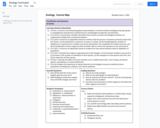
Grades 9-12 Regular Zoology Scope & Sequence
- Subject:
- Life Science
- Zoology
- Material Type:
- Full Course
- Provider:
- Liberty Public Schools
- Date Added:
- 06/02/2022


Grades 9-12 Regular Zoology Scope & Sequence
![Grassy Narrows and Muskrat Falls Dam: Hypothesis Testing and t-Tests [version 1.0]](https://oercommons.org/static/newdesign/images/materials/default-thumbnail-index.png)
Students are introduced to concepts of hypothesis testing using elementary hypothesis tests, t-tests, and p-values as they compare a given fish population for methylmercury levels (using real and hypothetical data) against real-world mercury standards.
![Grassy Narrows and Muskrat Falls Dam: The Central Limit Theorem and a t-test [version 2.0]](https://oercommons.org/static/newdesign/images/materials/default-thumbnail-index.png)
Students are introduced to concepts of sampling distributions and hypothesis testing using a simulation applet, elementary hypothesis tests, t-tests, and p-values as they compare a given fish population for methylmercury levels (using real and hypothetical data) against real-world mercury standards.

This theme-based English course integrates reading, writing, listening, speaking, and critical thinking skills around assignments and activities focusing on life science. This competency-based class allows students to work at their own pace, exit at a level appropriate to demonstrated skills and knowledge, and earn high school credits in English, Lab Science, Science and/or electives.
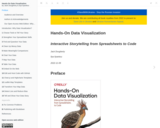
Tell your story and show it with data, using free and easy-to-learn tools on the web. This introductory book teaches you how to design interactive charts and customized maps for your website, beginning with easy drag-and-drop tools, such as Google Sheets, Datawrapper, and Tableau Public. You’ll also gradually learn how to edit open-source code templates built with Chart.js, Highcharts, and Leaflet on GitHub.
Hands-On Data Visualization takes you step-by-step through tutorials, real-world examples, and online resources. This book is ideal for students, educators, community activists, non-profit organizations, small business owners, local governments, journalists, researchers, or anyone who wants to take data out of spreadsheets and turn it into lively interactive stories. No coding experience is required.
Learn more about this open-access web edition, based on the book manuscript we submitted to our publisher, O’Reilly Media, Inc., which we have permission to freely share under the terms of our contract. Readers may purchase the publisher’s improved and copyedited version, in print or ebook editions. Figure numbering and other details vary between this open-access web edition and the publisher’s editions.
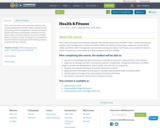
This course introduces the emotional, physical, and mental components of health. Topics covered include goal setting, stress management, nutrition principles, health and disease relationships, substance use and abuse, safety, and fitness which incorporates various forms of physical activity. Techniques are presented to help the student incorporate a total health and fitness program into their lifestyle.
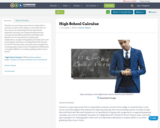
Calculus is a year-long course that is comparable to calculus courses at the college or university level. In this course, the technological tools required for exploring, learning, and communicating calculus concepts include Microsoft Word with Microsoft Equation (or its equivalent) for typing math assignments, an approved graphing calculator (see a list of acceptable calculators at College Board AP Central) for the AP Calculus exam, and some type of grapher for creating graphs online such as Graphmatica (Windows) or Grapher (MAC) or an online graphing utility of your choice.
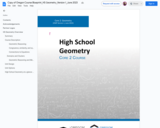
This ½ credit Geometry class is designed as one component of Oregon’s “core 2” mathematics sequence for grade 9 and 10 students. In addition to this course, students should have access to 1 credit worth of Algebra standards and ½ credit of Data Reasoning.
This course is designed to be implemented by an instructor steeped in the four cornerstones of the Oregon Math Project. In particular, the course centers “belonging” in its design for heterogeneous, detracked classrooms and “engagement” as it anchors relevant and hands-on activities. Unit options are provided so that teachers can make informed decisions based on their unique contexts.

The High School Integrated Conceptual Science Program (ICSP) is a NGSS-aligned curriculum that utilizes the conceptual progressions model for bundling of the NGSS, High School Conceptual Model Course 1 and strategies from Ambitious Science Teaching (AST) to focus on teaching practices needed to engage students in science discourse and learning. Course 1 is the High School Integrated Physics and Chemsitry Course. The goal of these units is to encourage students to continue in STEM by providing engaging and aligned curriculum. The focus of this year long course is on the first year of high school (freshman). While the course is designed to be taught as a collection of the units, each unit could be taught as a separate unit in a science course. A video about the new course shared its unique approach to learning and teaching. Wenatchee School District, one of the participating districts, wanted a way to share the program with the community. https://youtu.be/9AGk19YUi2oCourse 1 of the ICSP development was funded by Northwest Earth and Space Sciences Pipeline (NESSP) which is funded through the NASA Science Mission Directorate and housed with Washington NASA Space Grant Consortium at the University of Washington.
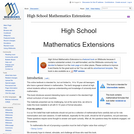
This online textbook is intended for, but not limited to, 14 to 18 year old teenagers who have a general interest in mathematics. The text's language is aimed at high school students without a rigorous understanding and knowledge of university-level mathematics.
This book introduces several interesting topics not covered in the standard high school curriculum of most countries.
The materials presented can be challenging, but at the same time, we strive to make this book readable to all with 9–10 years of formal education.
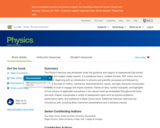
This Physics resource was developed under the guidance and support of experienced high school teachers and subject matter experts. It is presented here in multiple formats: PDF, online, and low-cost print. Beginning with an introduction to physics and scientific processes and followed by chapters focused on motion, mechanics, thermodynamics, waves, and light, this book incorporates a variety of tools to engage and inspire students. Hands-on labs, worked examples, and highlights of how physics is applicable everywhere in the natural world are embedded throughout the book, and each chapter incorporates a variety of assessment types such as practice problems, performance tasks, and traditional multiple choice items. Additional instructor resources are included as well, including direct instruction presentations and a solutions manual.

This Statistics resource was developed under the guidance and support of experienced high school teachers and subject matter experts. It is presented here in multiple formats: PDF, online, and low-cost print. Statistics offers instruction in grade-level appropriate concepts and skills in a logical, engaging progression that begins with sampling and data and covers topics such as probability, random variables, the normal distribution, and hypothesis testing. This content was developed with students in mind, incorporating statistics labs, worked exercises, and additional opportunities for assessment that incorporate real-world statistical applications. For instructors, resources are available to support the implementation of the Statistics textbook, including a Getting Started Guide, direct instruction presentations, and a solutions manual.
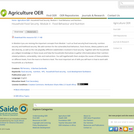
In Module 4 you are revising the important concepts from Module 1 such as food security,food insecurity, nutrition security and livelihood security. We add nutrition for the vulnerable,food behaviour, food choices, dietary patterns and diet diversity, as well as the role played by different stakeholders involved in food security. Together with the households you will gain knowledge on these issues and help the households themselves to gather information about their nutrition related problems, vulnerability, risks and malnutrition. You will together with them analyse the causes of these problems on different levels, from the macro to the micro level. The most important set of skills you will learn is how to work with households as a facilitator.

This is an activity about ultraviolet light. Learners will make ultraviolet light detector bracelets and use them to experiment with artificial light and sunlight. Then, they experiment with various sun-blocking materials to see how such materials impact the beads' absorption of ultraviolet light. Special UV detecting beads are required for this activity. This is Activity 3 of the Sun As a Star afterschool curriculum.
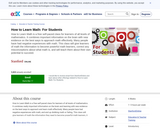
How to Learn Math is a free self-paced class for learners of all levels of mathematics. It combines really important information on the brain and learning with new evidence on the best ways to approach and learn math effectively. Many people have had negative experiences with math, and end up disliking math or failing. This class will give learners of math the information they need to become powerful math learners, it will correct any misconceptions they have about what math is, and it will teach them about their own potential to succeed and the strategies needed to approach math effectively.
Permitted use: the texts, exams, video, images, and other instructional materials provided with the courses and programs offered on the edX Site are for your personal use in connection with those courses and programs only.
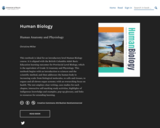
This textbook is ideal for an introductory level Human Biology course. It is aligned with the British Columbia Adult Basic Education learning outcomes for Provincial Level Biology, which is the equivalent of Grade 12 Anatomy and Physiology. This textbook begins with an introduction to sciences and the scientific method, and then addresses the human body in increasing scale: from biological molecules, to cells and tissues, to organs and all eleven organ systems; with an overarching focus on health. The text employs clear writing, case studies for each chapter, interactive self-marking study activities, highlights of Indigenous knowledge and examples, pop-up glossary, and links to resources for extending learning.
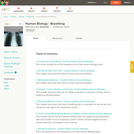
The Breathing Student Edition book is one of ten volumes making up the Human Biology curriculum, an interdisciplinary and inquiry-based approach to the study of life science.
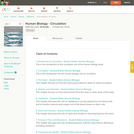
The Circulation Student Edition book is one of ten volumes making up the Human Biology curriculum, an interdisciplinary and inquiry-based approach to the study of life science.
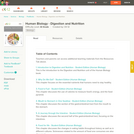
The Digestion and Nutrition Student Edition book is one of ten volumes making up the Human Biology curriculum, an interdisciplinary and inquiry-based approach to the study of life science.
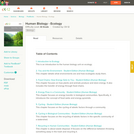
The Ecology Student Edition book is one of ten volumes making up the Human Biology curriculum, an interdisciplinary and inquiry-based approach to the study of life science.